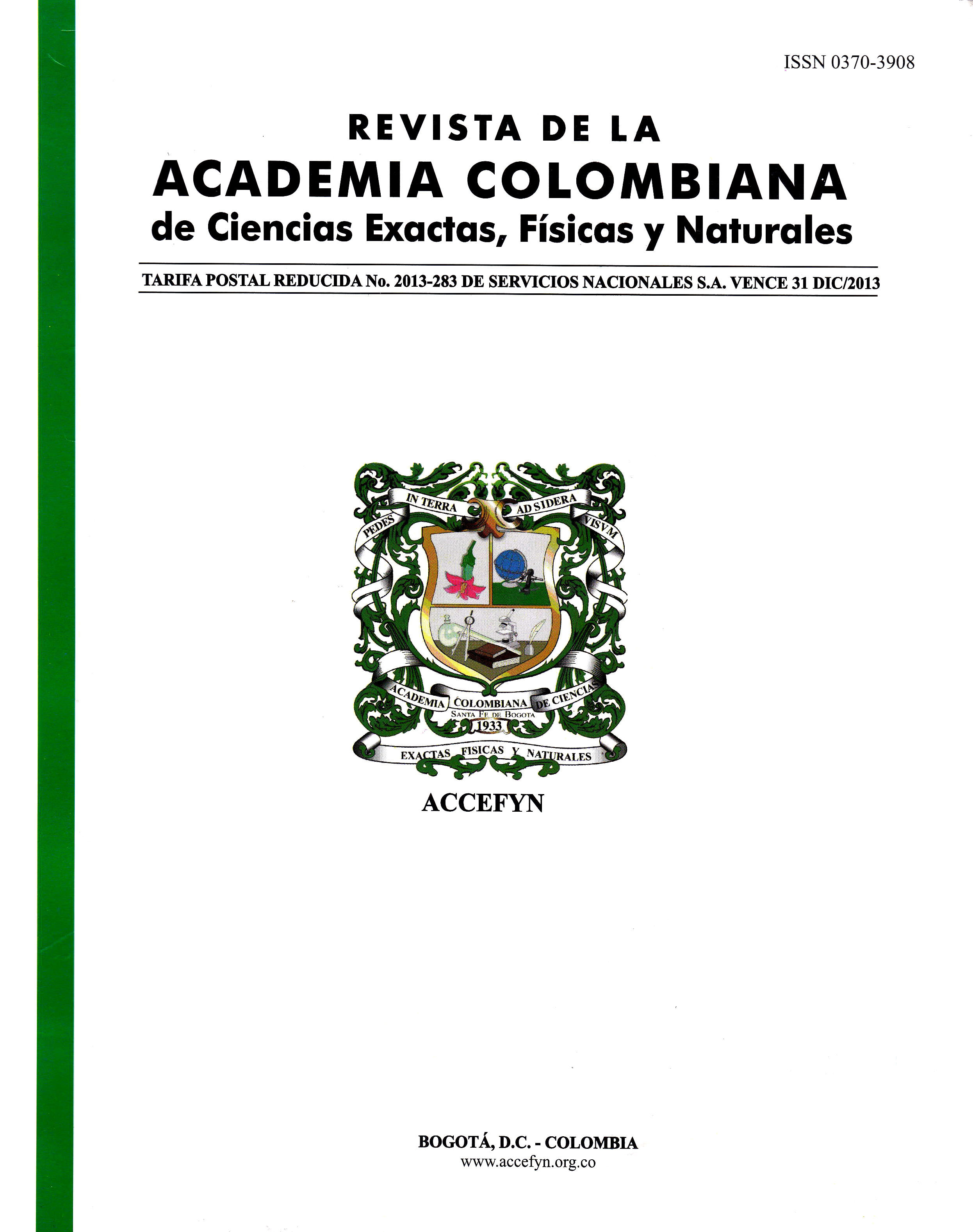Resumen
Se implementaron metodologías de análisis por electroforesis capilar (CE) y cromatografía líquida de alta eficiencia (HPLC) para la separación y cuantificación de (±)-catequina, (-)-epicatequina, (-)-epigalocatequina, galato de (-)-epicatequina y galato de (-)-epigalocatequina, en 5 muestras de 3 variedades de cacao cultivadas en Colombia. La técnica de HPLC fue más reproducible que la CE, que, sin embargo, resultó ser más rápida, económica y menos contaminante. Se cuantificaron, por HPLC y CE (estándar externo), (±)-catequina (0,07-0,79 mg/g de cacao) y (-)-epicatequina (1,99-9,66 mg/g de cacao) en los extractos acuosos de las tres variedades de cacao.
Referencias
Auger, C.; Al-Awwadi, N.; Bornet, A.; Rouanet, J.; Gase, F.; Cros G.; Teissedre P. 2004. Catechins and procyanidins in Mediterranean diets. Food Res Inter 37:233-245.
Bowser, M.; Frost, N.; Jing, M. 2010. Capillary electrophoresis. Anal Chem 82:4682-4698.
Castro, M.; López, J.; Gonzáles, M.; Barral, L. 2011. Development, validation and application of micellar capillary chromatography method for routine analysis of catechins, quercetin and thymol in natural samples. Microchem J 99:461-469.
Calderón, A.; Wright, B.; Hurts, J.; Breemen, R. 2009. Screening antioxidants using LC-MS: Case study with cocoa. J Agric Food Chem 57:5693-5699.
Dalluge, J.; Nelson, B. 2000. Determination of tea catechins. J Chromatogr A 880:411-424.
Folch-Cano, C.; Jullian, C.; Speisky, H.; Olea-Azar, C. 2010. Antioxidant activity of inclusion complexes of tea catechins with â-cyclodextrins by ORAC assays. Food Res Int 43:2039-2044.
Her, M.; Koel, M. 2003. Separation of polyphenolic compounds extracted from plant matrices using capillary electrophoresis. J Chromatogr A 990:225-230.
Kartsova L.; Ganzha O. 2006. Electrophoretic separation of tea flavanoids in the modes of capillary zone electrophoresis and micellar electrokinetic chromatography, Russ J Appl Chem 79:1110-1114.
Niemenak, N.; Rohsius, C.; Elwers, S.; Ndoumou D. O.; Lieberei R. 2006. Comparative study of different cocoa (Theobroma cacao L.) clones in terms of their phenolics and anthocyanins contents. J Food Composition Anal 19:612-619.
Nishitani, E.; Sagesaka Y. 2004. Simultaneous determination of catechins, caffeine and other phenolic compounds in tea using new HPLC method. J Food Comp Anal 17:675-685.
Putte, L. B.; Hollman, P. 2000. Catechin contents of foods commonly consumed in the Netherlands. 2. Tea, Wine, Fruit Juices, and Chocolate Milk. J Agric Food Chem 48:1752-1757.
Rice-Evans, C. 1996. Structure-antioxidant activity relationships of flavonoids and phenolic acids. Free Radical Biol Med 20(7):933-956.
Tsao, R.; Deng, Z. 2004. Separation procedures for naturally occurring antioxidant phytochemicals. J Chromatogr B 812:85-99.
Valls, J.; Millán, S.; Martí, M.; Borràs, E.; Arola, L. 2009. Advanced separation methods of food anthocyanins, isoflavones, and flavonols. J Chromatogr A 1216(43):7143-7172.
Vanhoenacker, G.; Villiers, A.; Lazou, K.; De Keukeleire D.; Sandra P. 2001. Comparison of high-performance liquid chromatography-mass spectroscopy and capillary electrophoresis-mass spectroscopy for the analysis of phenolic compounds in diethyl ether extracts of red wines. J Chromatogr A 54:309-315.
Yilmaz, Y. 2006. Novel uses of catechins in foods. Trends in Food Sci & Tech 17:64-71.

Esta obra está bajo una licencia internacional Creative Commons Atribución-NoComercial-SinDerivadas 4.0.
Derechos de autor 2023 https://creativecommons.org/licenses/by-nc-nd/4.0

